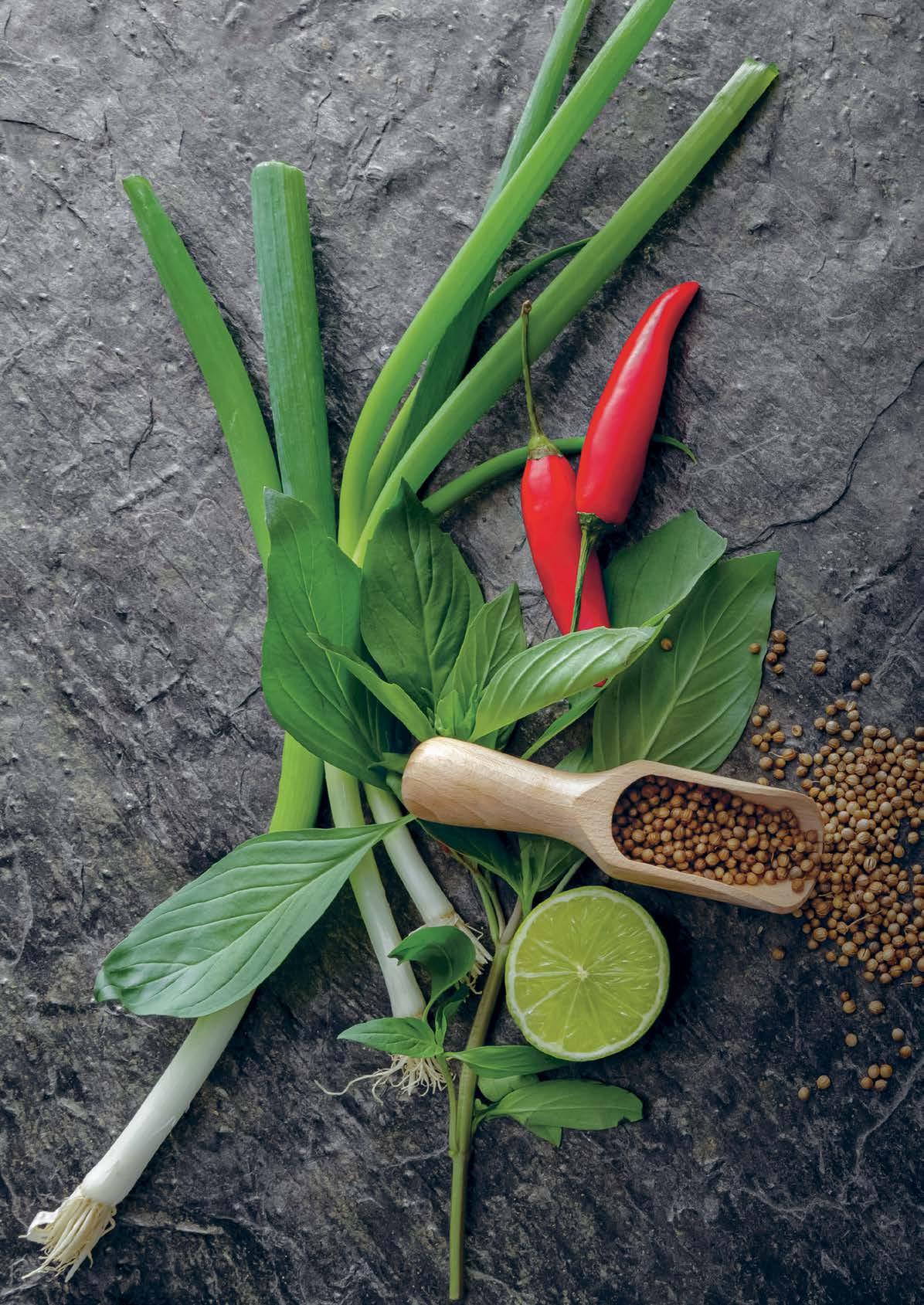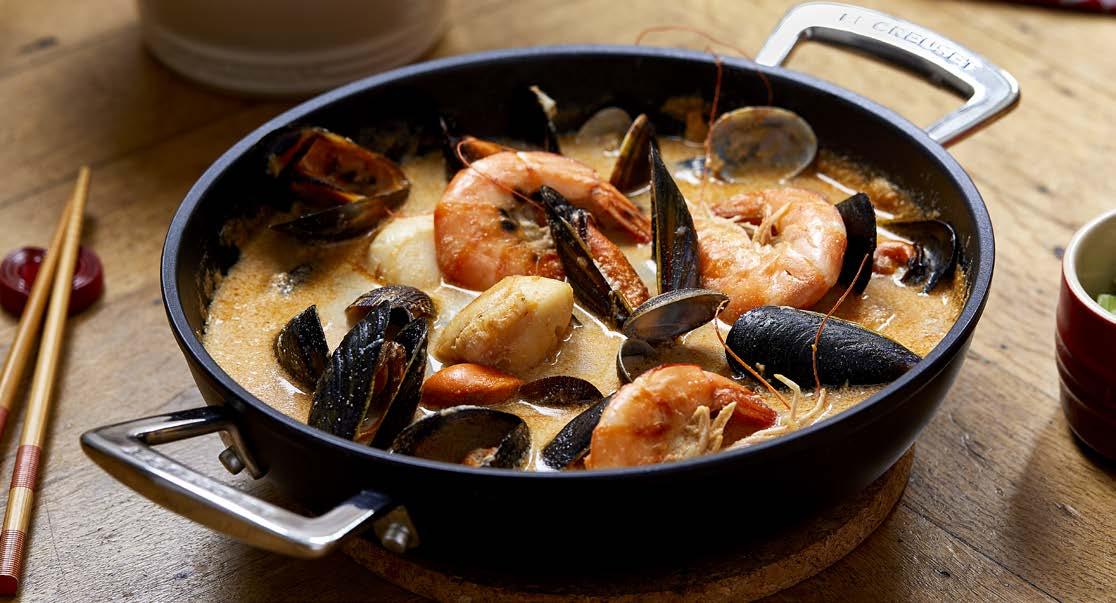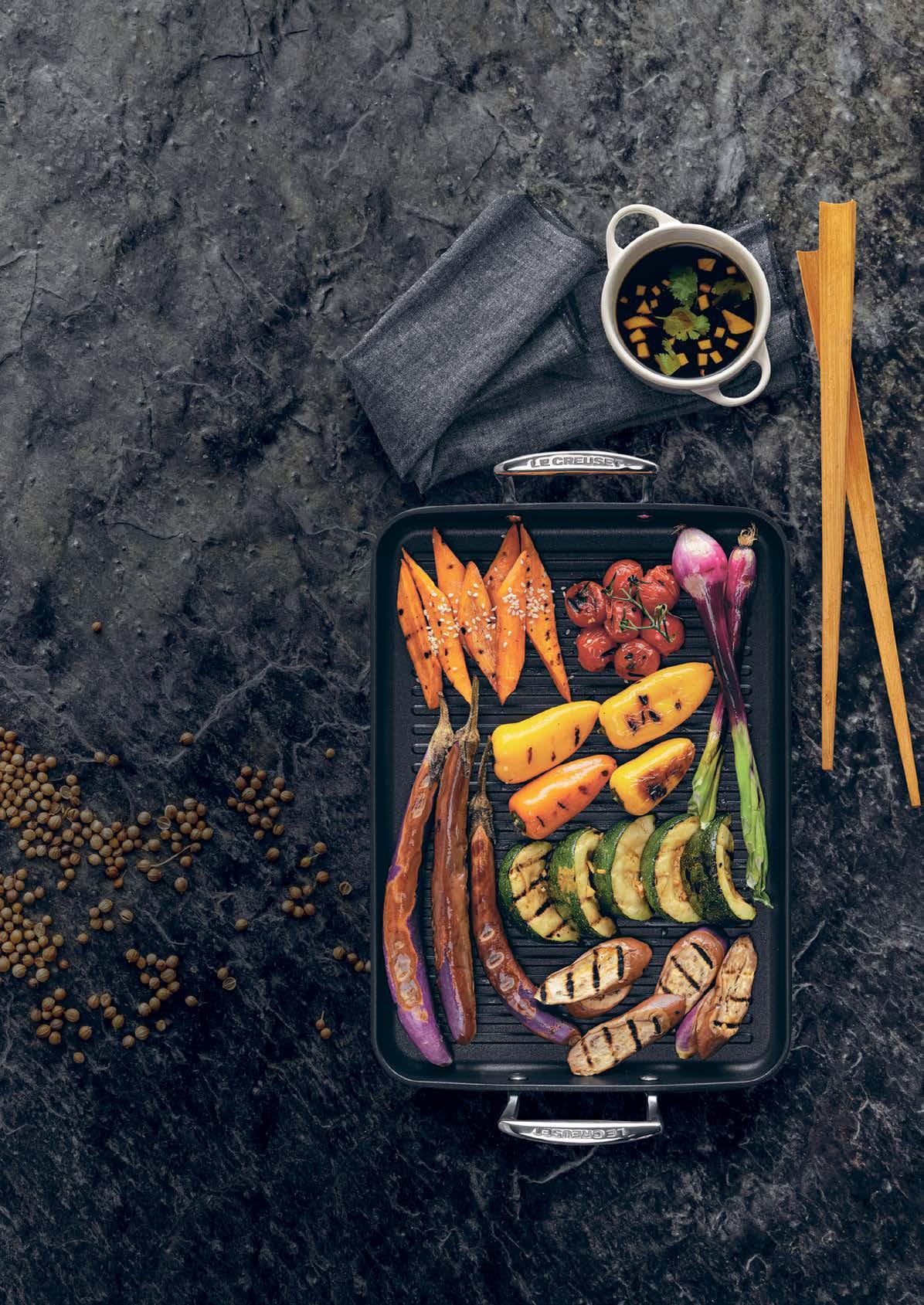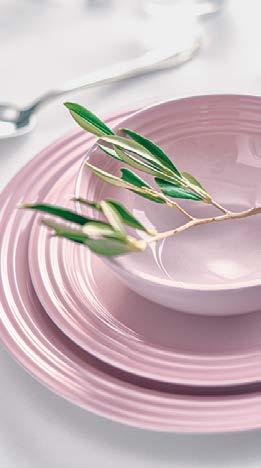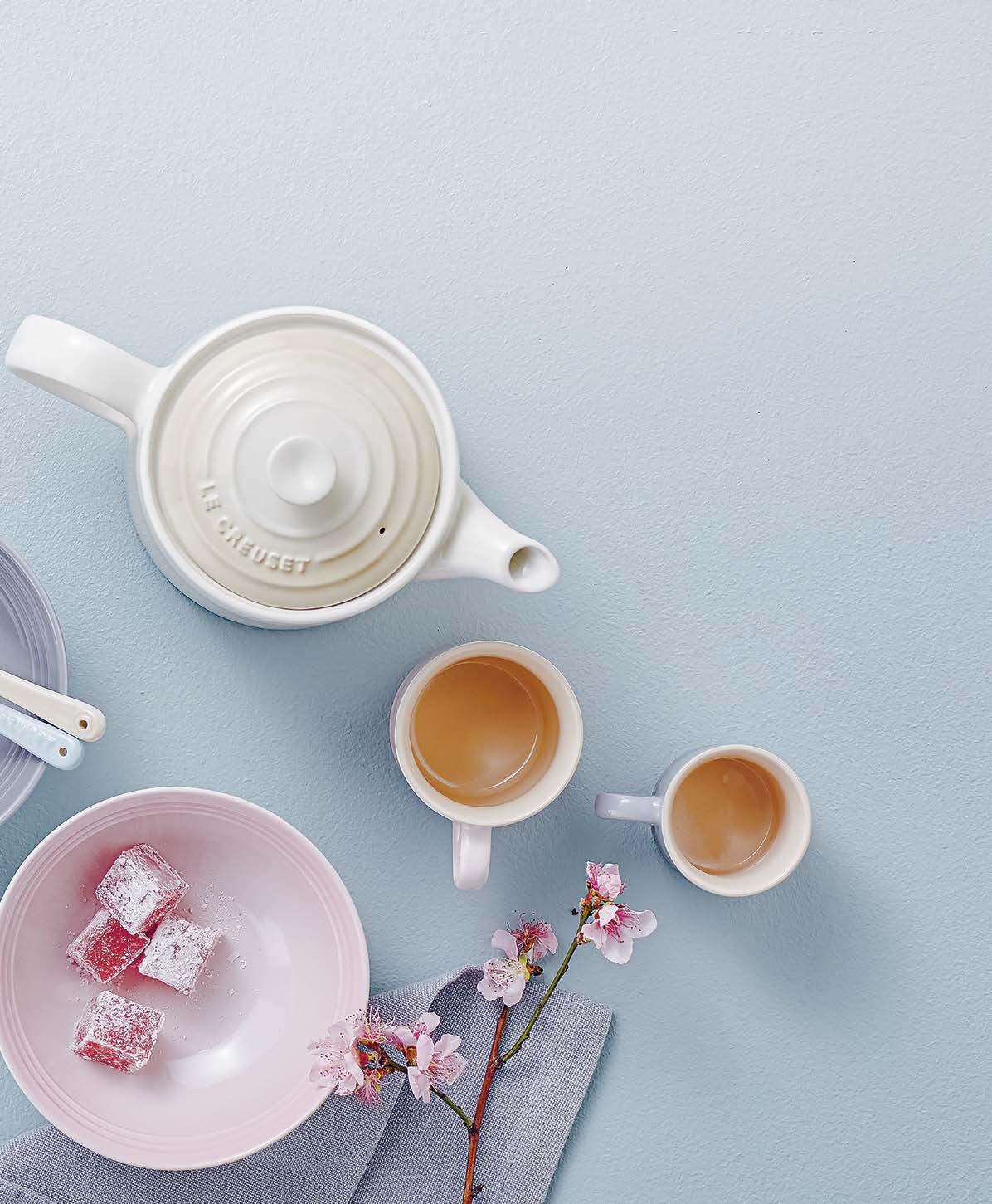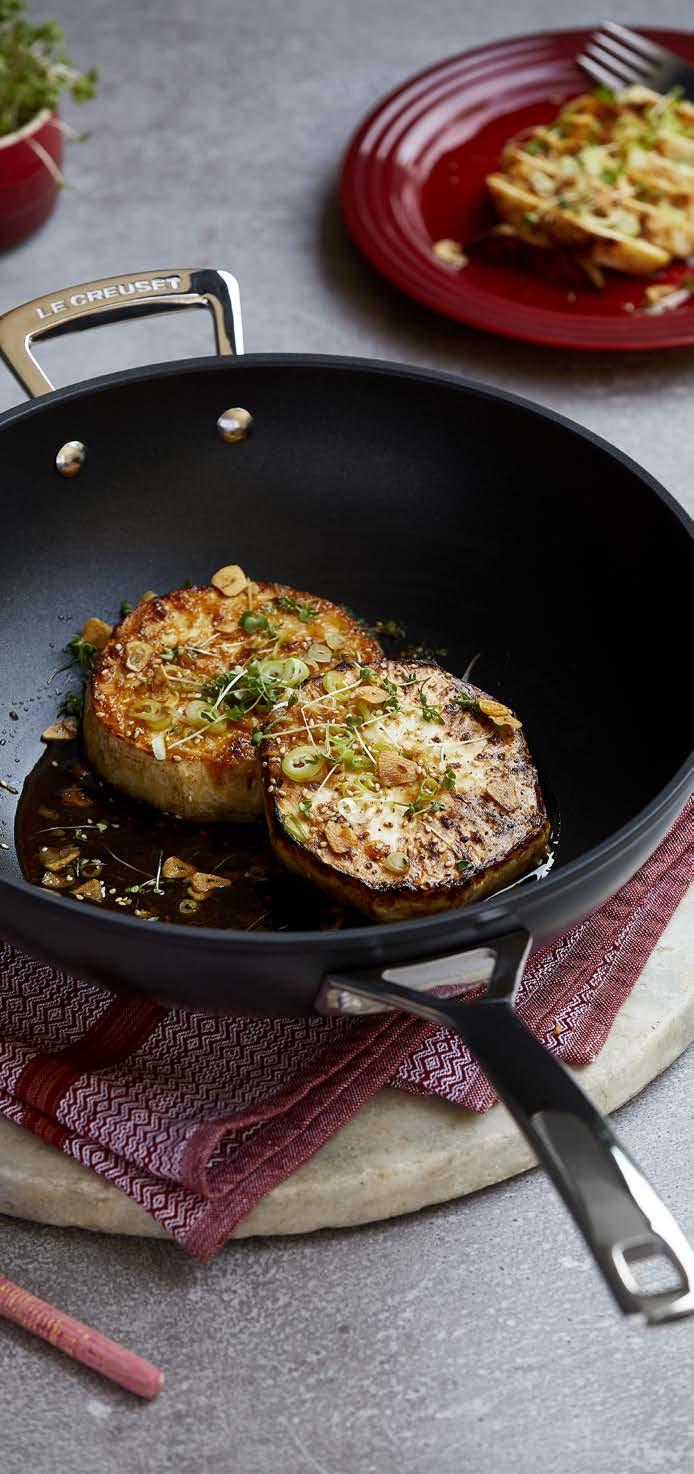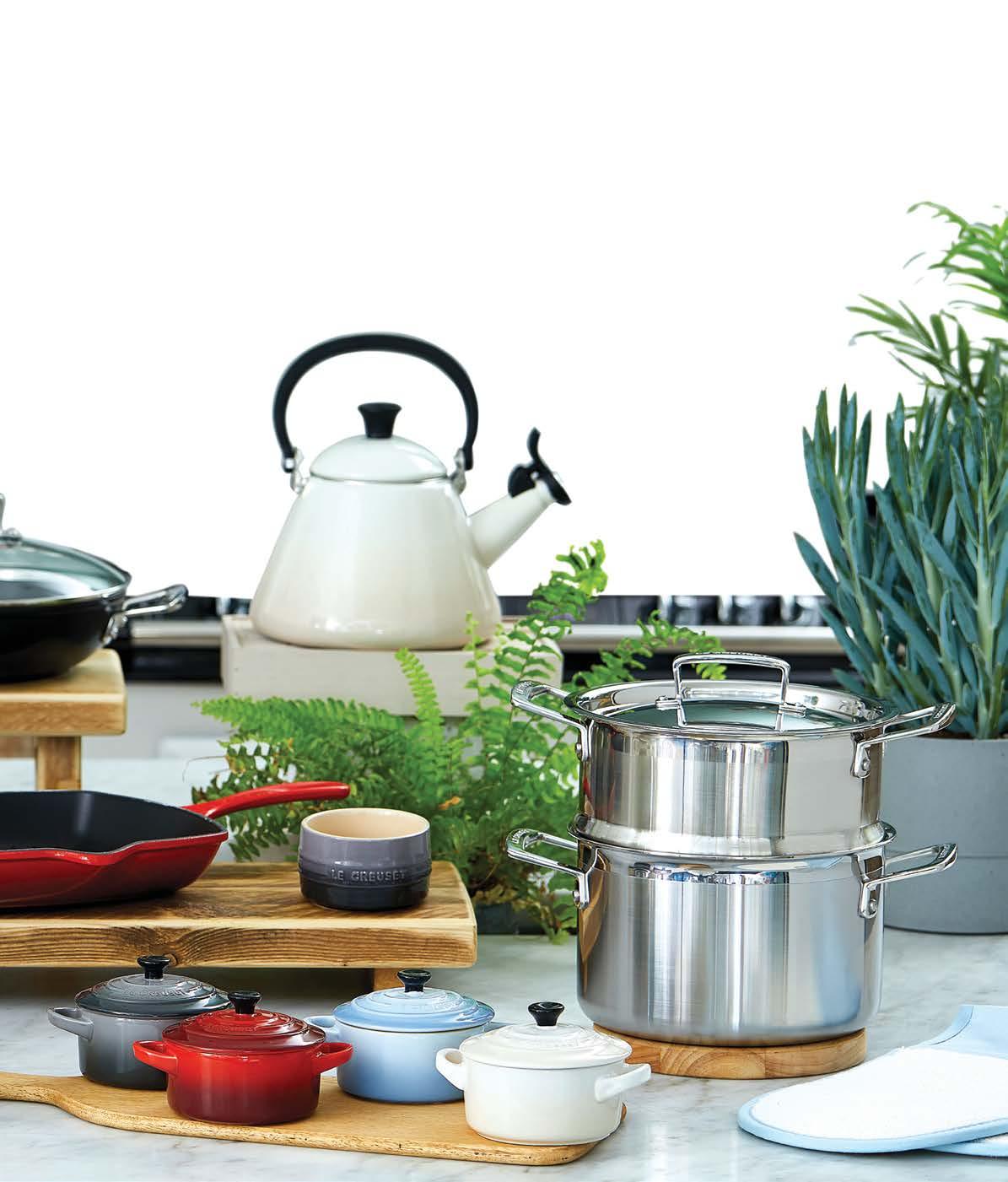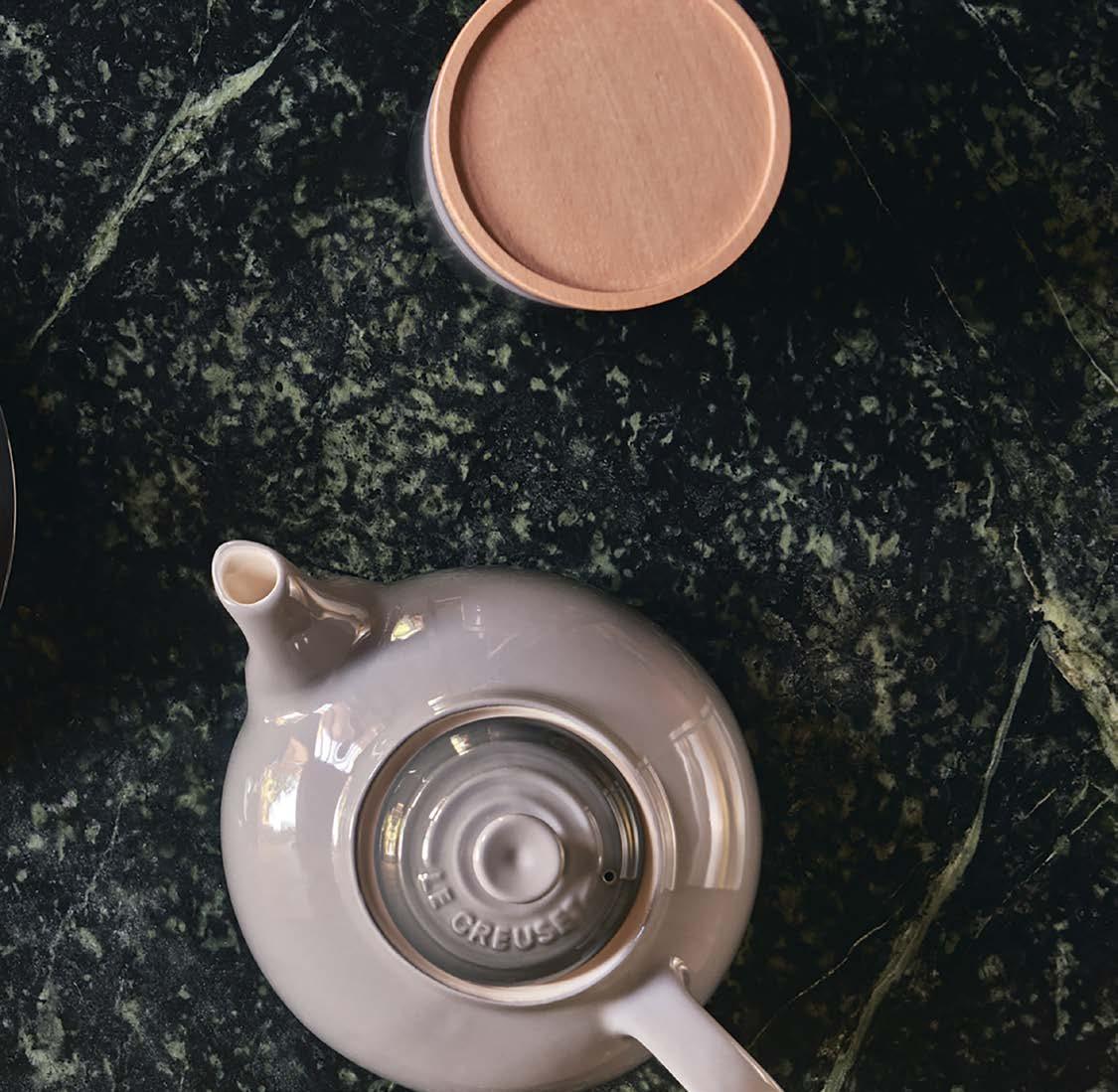
4 minute read
INTRODUCING OUR NEW COLOUR
You’re a Japanese chef, food writer and cookery teacher. How did your career in food begin? My earliest memories revolve around food. I grew up in the countryside with views over Mount Fuji and had the luxury of homegrown, organic vegetables with local ingredients cooked by my mother. When my father returned from Tokyo at the weekends, I’d be treated to sushi or unagi (eel) specialities. However, it wasn’t until I was living in Chicago when I was 19 studying music that I began a more formal training with Le Cordon Bleu. I started my career working late nights in the fiery heat of downtown Chicago kitchens, honing my skills as a professional chef alongside a Mexican and American team.
Can you explain what Japanese cuisine is and the common ingredients used? Japanese cooking is all about straightforward methods and maximum flavour. However, you do need to use fresh, quality ingredients, and follow any simple steps in the exact order. The five common ingredients are miso, sake, mirin, soy sauce and dashi stock. We also use ingredients that are very common in other cuisines, such as tahini, curry sauce, mayonnaise, and mustard.
What is your favourite Japanese dish to cook, and what is your favourite to eat? I love dishes that my family can join in making, such as gyozas. The little shapes are a pleasure to craft and it’s faster if everyone helps. To eat, I love sushi and sashimi prepared by a master sushi chef. The quality and skill are hard to match, so it’s always a real treat.
Do you have any favourite Le Creuset pieces to cook with that are especially good for Japanese cuisine? The Le Creuset Cocotte Every 18cm pot is wonderful for making Japanese rice, as the heavy, thickness of the pot retains and circulates the heat well, ensuring it creates a light fluffy consistency.
Le Creuset’s Spring/Summer 2020 theme is Zen Kitchen. How can we incorporate this idea into our cooking experiences? Aim to cook in a simple way with the highest quality ingredients you can find. This is my idea of a zen approach. It’s not necessary to struggle with overly complex methods and techniques that conceal ingredient flavour.
You run a cooking school in South London that’s designed to show how simple, nourishing, and delicious Japanese food can be. How did this become your passion? The rise in the popularity of Japanese food over recent years meant I was receiving more and more requests from friends and clients asking to be shown how to make sushi, as well as gyoza, tempura and other styles. I realised that I was enjoying teaching a lot, and eventually Yuki’s Kitchen was born.
If any of our readers are planning to visit Japan this year, do you have any must-do recommendations? Visit an Onsen! This is a hot spring bath, and you can find them throughout Japan. They are very zen, and a wonderful way to remedy your jet-lag, relax and soak for a few hours.
The idea of Japanese cooking can be daunting to some. What dish would you advise starting with for a beginner? Dashi, which is a Japanese stock and a flavour foundation for many dishes. There are a number of different dashi and they are incredibly simple to make, without taking hours to steam and simmer at the stove.
Do you have any Japanese restaurant recommendations? My first recommendation would be Endo at Rotunda, in London’s White City. We are lucky to have Endo Kazutoshi here in the UK, who is a third generation sushi master chef with an approach as dynamic as it is delicious. He is mindful of the consequences of over-fishing, so he works directly with fishermen to ensure sustainably sourced produce is served in his 16-seat restaurant. My second recommendation is Kayanoya in Japan’s Fukuoka. It’s famous for its dashi, and housed in a large, thatched traditional Japanese barn building in the beautiful countryside. The menu encapsulates an approach to natural and slow food. A multicourse meal there is a lovely way to spend an afternoon, as the food is gentle but full of umami flavour thanks to the stocks.
What do you have coming up this year? I have a number of exciting collaborations in the pipeline that I can’t reveal just yet! Also, some new classes, focusing on vegetarian Japanese cooking, and workshops for specific ingredients, such as my miso making workshop.
HIJIKI CHIRASHI SUSHI Hijiki is a sea vegetable like wakame and kombu. It is rich in fibre and minerals – a delicious health food with a unique flavour. Go online to www.lecreuset. com for the recipe.
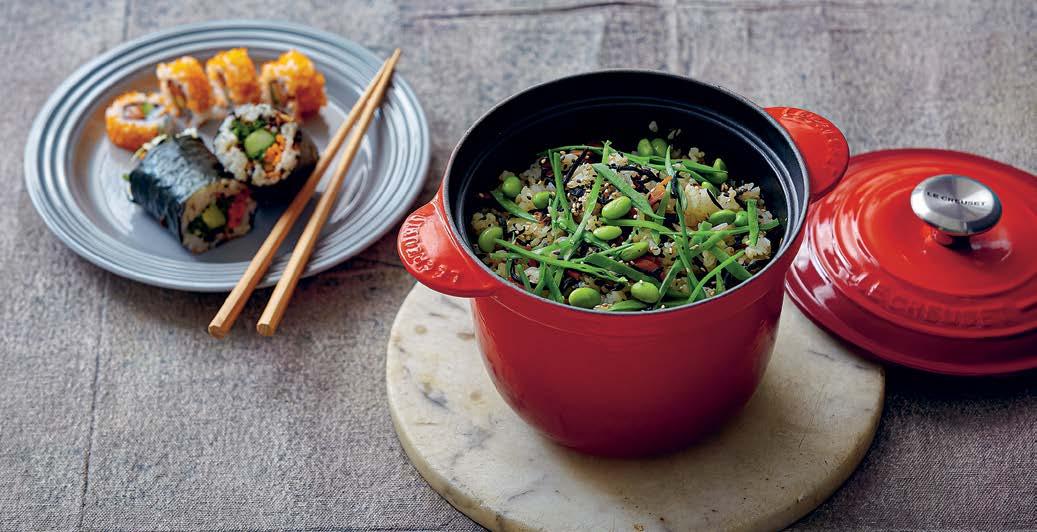
THE ART OF GRILLING YAKITORI
